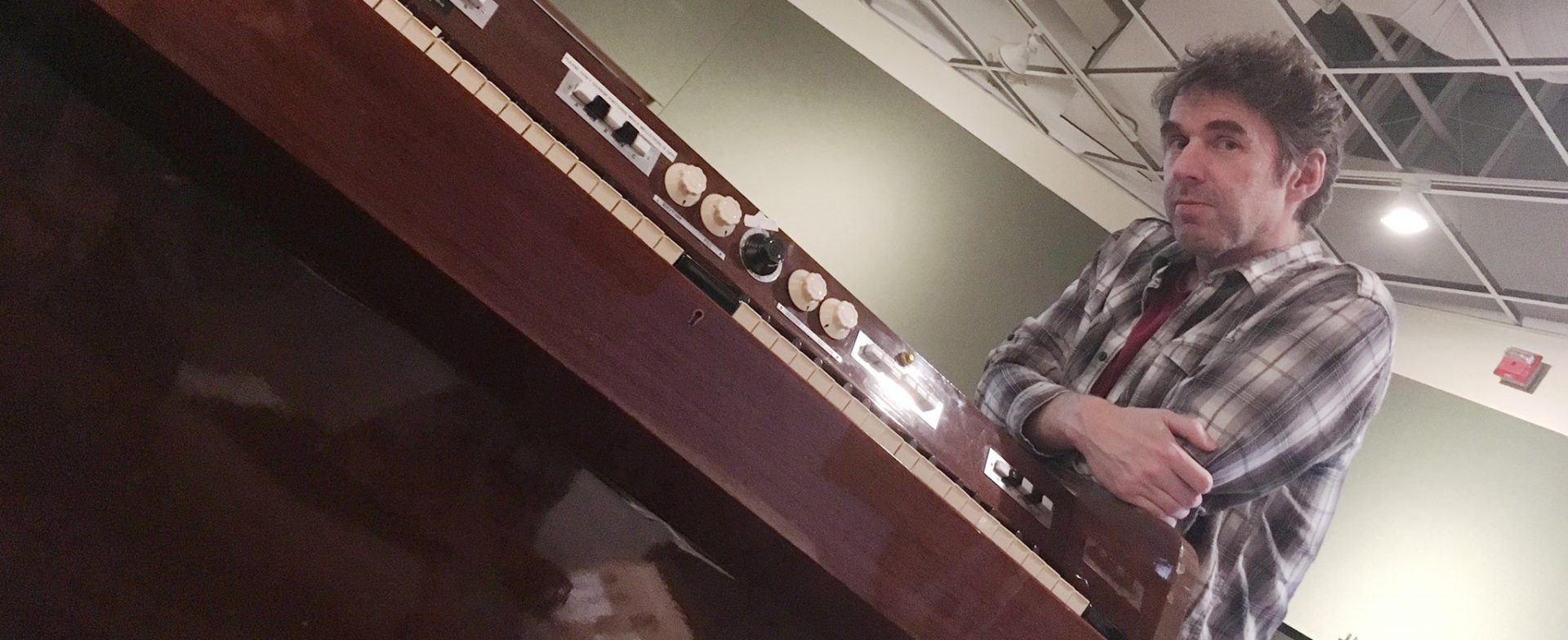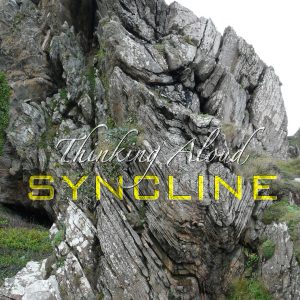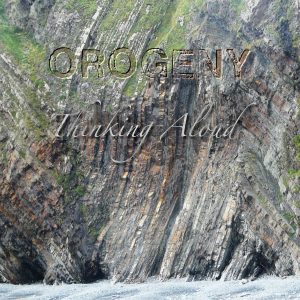As the world comes to terms with the release of the fifth and sixth Thinking Aloud solo CDs simultaneously, let’s dig through the layers to see what might be the root cause of all this sound.
1977 – 1984: The Very Early Years
It began with the toy keyboard with the multi-coloured keys…
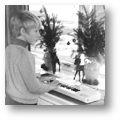
Although fortunate enough to take up the piano at the age of five, strangely it was vocal performances that marked Thinking Aloud’s early insertion onto the stage. A live, unaccompanied rendition of “Half Way Up The Stairs” to an audience of several hundred adults, at the age of six, was probably the event that put me off performing anything for anyone ever again. Thus it was a reluctant nine year old who was coaxed into playing various “Sonatinas in G” at school christmas shows, and an even more reluctant ten year old who sang a duet of “The Holly And The Ivy” from the local choir loft.
The first identifiable Thinking Aloud composition, a keyboard, xylophone, wood block and glockenspiel piece called “Minotaur”, was penned shortly after starting High School, and can be found on the million-selling “Hour Tape” compilation. I say “million” but I probably mean “a couple of dozen”. Influences at this time were typical late 1970s – early 1980s pop, clearly reflected in the electronic soundscapes found in Minotaur. It was again, however, vocals that brought the young Thinking Aloud back to the limelight, being cast as the voice of Caesar Augustus in the 1984 production of “The Rock Nativity” (also available on cassette) by virtue of being one of only two boys in the school choir.
1986 – 1988: Gaining Velocity
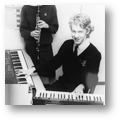
By 1986, however, songwriting was in full swing, as the epic sounds of Velocity (a keyboard / bass / keyboard combo) developed in the school practice rooms with co-conspirator Alistair Tuxworth (vocals, bass).
Velocity performed live on two occasions, rocking audiences to the strains of Tuxworth’s “Twisted Love” and “In This World Of Shadows”, however big things were in the pipeline, and an epic musical about war and peace almost made it to production, but it wasn’t to be. Despite the release of debut cassette, “0-60 in 3 and 3/4 hours”, which featured the classic “Nuclear Submarine”, the band split as educational differences came between the members, but all was not quite lost and forgotten.
The last years of Velocity had shown a marked new musical influence, as the work of the Moody Blues was discovered. The quest to reproduce the curious and haunting sounds of their early albums led to investment in new and old keyboards, and brought in the era of the sampler and the string synth – the word “Mellotron”, which would have explained much, still lay undiscovered.
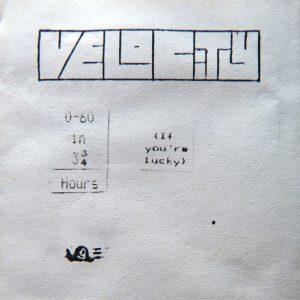
1988 – 1991: Sick Notes and Stonehenge
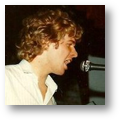
The true genesis of Thinking Aloud came in 1988, at 6th-form college, where the house band, Doctor and the Sick Notes drew yours truly into the line up, alongside Gareth Bibby (guitar, vocals), Anthony Dewhurst (bass) and John Brown (vocals, guitar), amongst others. The Sick Notes performed three covers gigs over two years (all preserved for posterity on magnetic media), featuring that early Thinking Aloud keyboard / piano / flute / vocal sound somewhere near the back, however it was the home-grown adventurousness of Stonehenge that saw the songwriting and arranging / recording burst forth.
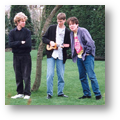
Stonehenge comprised Messers Bibby, Dewhurst, Brown and myself (in various combinations) and we recorded six (including a double!) albums’-worth of material between 1988 and 1991 (with yours truly acting as the nominal keyboard-pianist-flautist-cellist-engineer-programmer-occasional-vocalist). Output varied from downright weird “Mr Caterpillar Takes A Trip” to the almost-quite-nice “I’m Calling Out”.
One live performance in the Common Room rounded off a marvellously productive period, however the band was set for a fall.

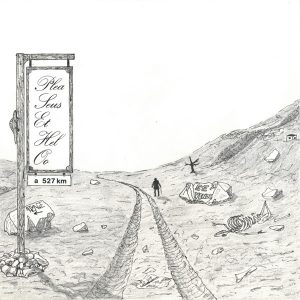
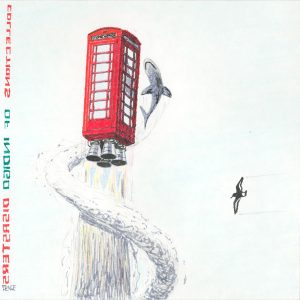
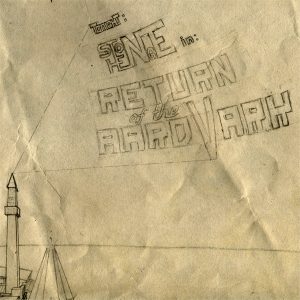
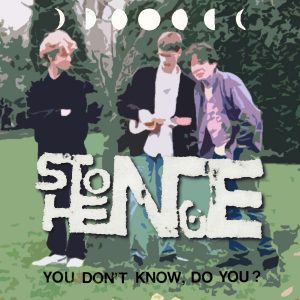
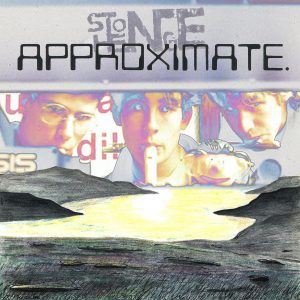
1992 – 1995: Thinking Aloud Alone
Stonehenge split due to geographical differences, and Thinking Aloud came fully into being as a solo affair.
Fate stepped into the breach and unexpectedly reunited Velocity after a chance meeting on a train. Some further musical ventures ensued, although these remained unreleased until the compilation CD, “0-16 in … er … 16 years” was created in around 2002. Meanwhile solo efforts continued slowly but surely.
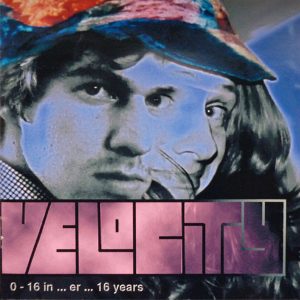
As with Stonehenge, the musical output was recorded via a cassette 4-track: bouncing of tracks, cueing-in of secondary mixes, and the recording of live vocals on the same track as direct feed drum machine sounds was commonplace. The resulting mixes reflected the rather limited capabilities of the medium.
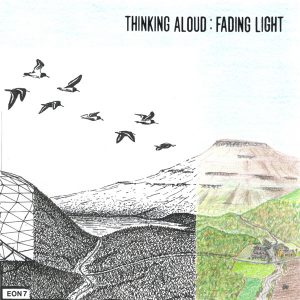
The ultra-hi-tech recording method continued until the mid-1990s, producing a couple of albums’-worth of stuff (“Fading Light” in 1994, and “System Conflict” in 1996, both of which had a vaguely ‘concept album’ feel to them), as well as a handful of “one offs” including the Geology Department’s 1992 single, “Orgyology”. The old four-track machine subsequently wowwed and fluttered itself to death, and that was the end of that.
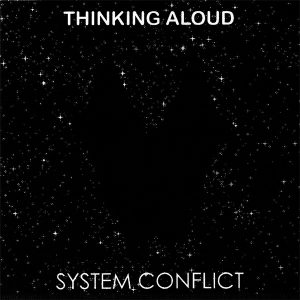
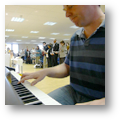
In the meantime, it was the piano playing that was in demand. Thinking Aloud’s ivory-tinkling was, for nearly fifteen years, a regular weekly feature at various congregational gatherings, which was quite long enough for anyone, I think.
2006 – 2007: A Return To Recording
A decade in the musical wilderness came to an end abruptly in 2006 following a family holiday to Canada. Distant relative, and Canadian rocker Steve Jones introduced me to the new world of digital recording and eyes long closed were reopened.
The digital age had begun. Songs that had lain dormant for decades were dusted off, pushed down USB cables, and resuscitated through the magic of modern technology. By coincidence, Steve had just released an album of acoustic tracks (just guitar, bass and vocals) – several songs from this were stolen and experimentally given the Thinking Aloud treatment purely for fun, adding piano, orchestral arrangments, Mellotronic sounds, drums and whatever else was available. On hearing the results, Steve was unexpectedly impressed, and thus began a trans-Atlantic collaborative effort for his next album, “Clear Blue Sky”.
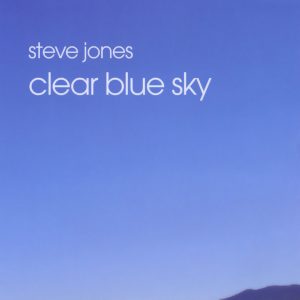
2008: Clear Blue Sky & Conglomerate
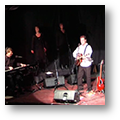
Recorded during 2007, full backing track arrangements for all the tracks on Steve’s album were created, featuring piano, Mellotron, orchestra and a host of other bits and pieces. The culmination of all this effort was my first concert in 19 years, playing piano and flute at Steve’s 2008 CD release concert in Penticton, British Columbia.
Meanwhile, self-penned compositions were also taking form, and the first “proper” Thinking Aloud album, “Conglomerate” was completed in late 2007. Released in 2008 on CD, Conglomerate featured a number of re-recorded older songs that had previously appeared on the unreleased 1990s albums, together with a handful of new compositions. Although the CD only had a small production run, copies sold as far away as Switzerland, Iceland, the US, and Canada.
2010 – 2011: Erosion & Pictures
Following the 2007 collaboration with Steve Jones, a further four tracks for Steve’s 2011 album “Pictures” received the TA treatment.
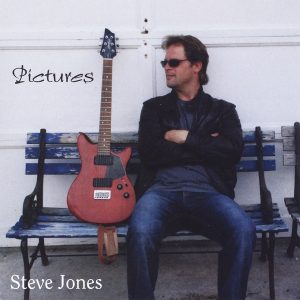
At the same time, the second Thinking Aloud CD, “Erosion” was released at the end of 2010, featuring mostly new compositions and returning to the ‘concept album’ feel of earlier years.
2012: Syncline
Early 2012 saw a burst of recording and mixing, enabling a third CD, “Syncline” to be ready for release in May 2012. Some of the tracks on Syncline were recorded as long ago as 2007 but (in keeping with trying to group songs on albums into some meaningful coherency) never made it onto earlier releases.
2012 – 2013: Grooving the Cartoons!
Towards the end of 2012, I was approached by Psychedelic Rock’s Grooviest Cartoon Band, Apology None to provide the orchestral soundtrack to their new cartoon episode, “Star Trip”. This 24 minute epic reunited the original crew of the USS Enterprise in a prequel story featuring the members of Apology None plus a handful of extras. So set up your tent, tune in, and get spaced out, man…
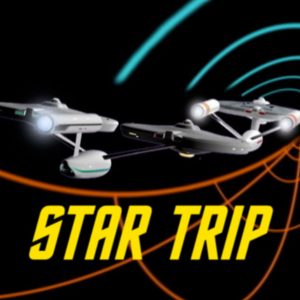
The cartoon adventures with Apology None continued, firstly with a radio sketch that was later made into this short cartoon: Why Don’t You Call Henry?, featuring yours truly as orchestral arranger Henry T. Pipe, and later in the form of a joint Thinking Aloud / Apology None song released in 2014 on their album Saturdelia, which also forms part of the soundtrack for their 2014 cartoon epic of the same name.
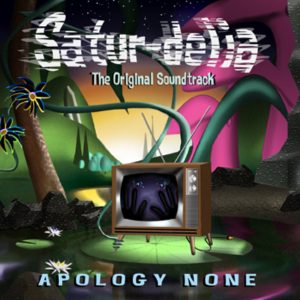
2014: So What?
Ever since the release of Steve Jones’s 2008 album “Clear Blue Sky”, which featured bucket-loads of Thinking Aloud instrumentation, there was a feeling that we ought to do that again. In 2010, the basics of three songs were laid down during a visit by Steve to the UK, and in the four years following, in very gradual steps, eleven new songs (this time by both Steve and myself) were crafted into the album “Shiny Objects“. Released in November 2014 under the joint band-name of So? this album shows a slightly lighter side to the Thinking Aloud sound. The first single, “Yes I Know” (words/music by Steve Jones; additional lyrics by me) can be seen and heard below, which reached No. 1 in the local indie charts in BC!
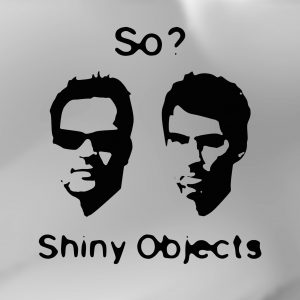
If you can find it, the “Complete Heretic’s Guide To Christmas” video (2014) by David Fitzgerald has a full half-hour of TA musical accompaniment (both trad and new)!
2014 – 2017: Trans-Atlantic Covers & Collaborations
Despite never really having done covers previously, 2014 saw yours truly become involved in the Theme Music group on Facebook. Sometimes solo, sometimes in collaboration with other musicians globally, a goodly number of cover songs were recorded, which included forays into video-making. Songs by many of TA’s influences have featured so far, and some of the offerings can be found on the Thinking Aloud YouTube channel. There you’ll find things like this cover of “Opportunities” by The Pet Shop Boys:
… and also things like this Tori Amos classic:
… as well as plenty from the likes of The Moody Blues and The Divine Comedy.
2016: Orogenics
But what of solo Thinking Aloud productions? Well, album No.4, “Orogeny” was released in September 2016, with twelve new tracks concluding the journey started in “Syncline”! Here’s one track from the middle of the album as a taster:
2017: Wandering the Aeons
Teaming up with Boston-based singer/songwriter Andrea Kremer, my newest collaborative venture goes by the name of The Aeon Wanderers. Starting out by recording a number of vocal-heavy cover versions, we quickly moved on to creating original songs! An early mix of one of those can be seen on our YouTube channel:
2017: Twins delivered! Erratic Subduction.
Because a new collaborative venture is not enough, not one but two Thinking Aloud solo albums were released in the third quarter of 2017. Subduction comprises new songs, while Erratic is an eclectic collection of musical moments that hadn’t found homes anywhere else.
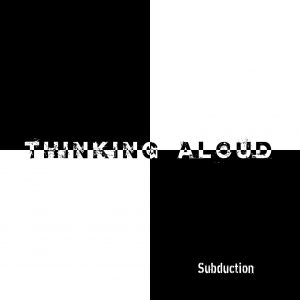

2019: Discovering Davie Street
Following Steve Jones’s Pictures album in 2011, Steve took a well-earned break from recording, but by 2017 was itching to put some new material down. During a UK visit in 2017, he and I laid down the groundwork for 14 or so new tracks, from which I had the honour of arranging and producing 10 of the 11 that went onto Steve’s 2019 album, “Davie Street”. A much heavier offering than previous albums, the first eponymous single “Davie Street” can be seen below, while the follow-up single “Missing In Me” hit No. 1 on the N1M indie charts for Canada in early 2021. Yours truly may have also had a hand in the album artwork. 😉
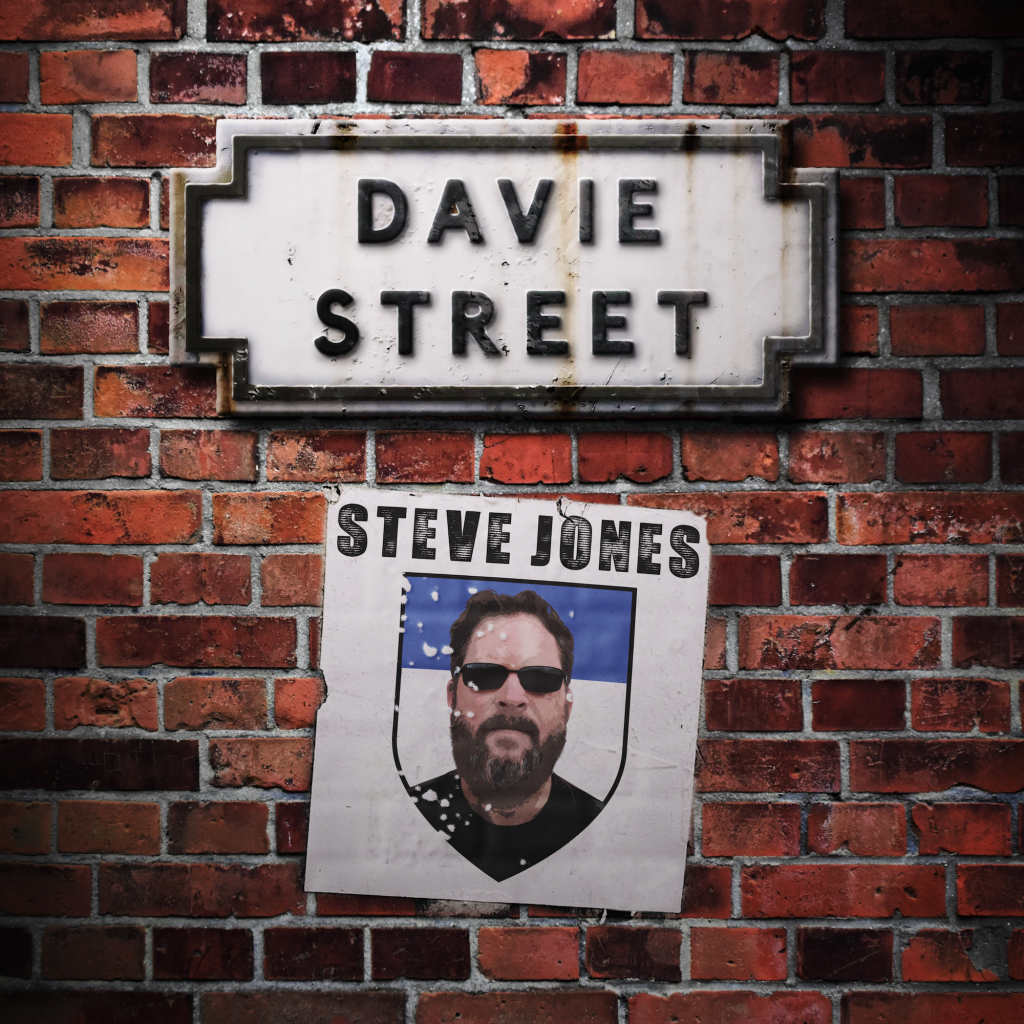
2020: When History became Fictional
After three years of writing original songs with Andrea, the Aeon Wanderers debut album “Fictional Histories” was released in August 2020. Described as a genre-defying collection of songs, and variously dubbed “Drama-Pop” or “Prog-Pop”, the 11 tracks take you from rocking out, through high and low places, to haunted landscapes of uncertainty. 🙂


